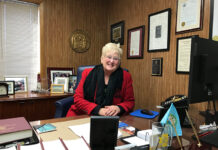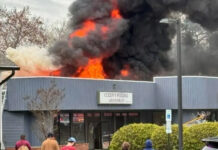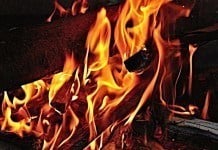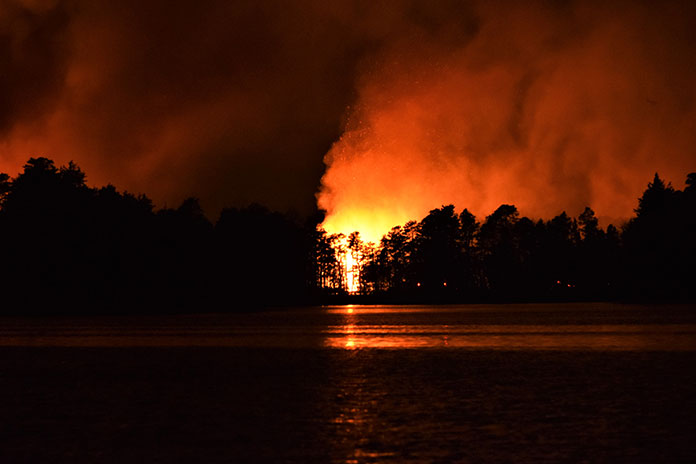
MANCHESTER – The subject of evacuation plans came up during a recent Township Council meeting. Questions were directed to the Council and to the Office of Emergency Management. Ironically, a little over 24 hours later, dozens of residents were told to evacuate from their homes due to the Jimmy’s Water Hole wildfire.
The recent fire may well prompt a revisit to the Firewise program. This involves volunteers addressing wildfire safety working with the State Forest Fire Service.
A few township villages already had Firewise Communities. The designation calls for residents to be educated on how to be proactive to minimize the chances of wildfires and the losses that can occur.
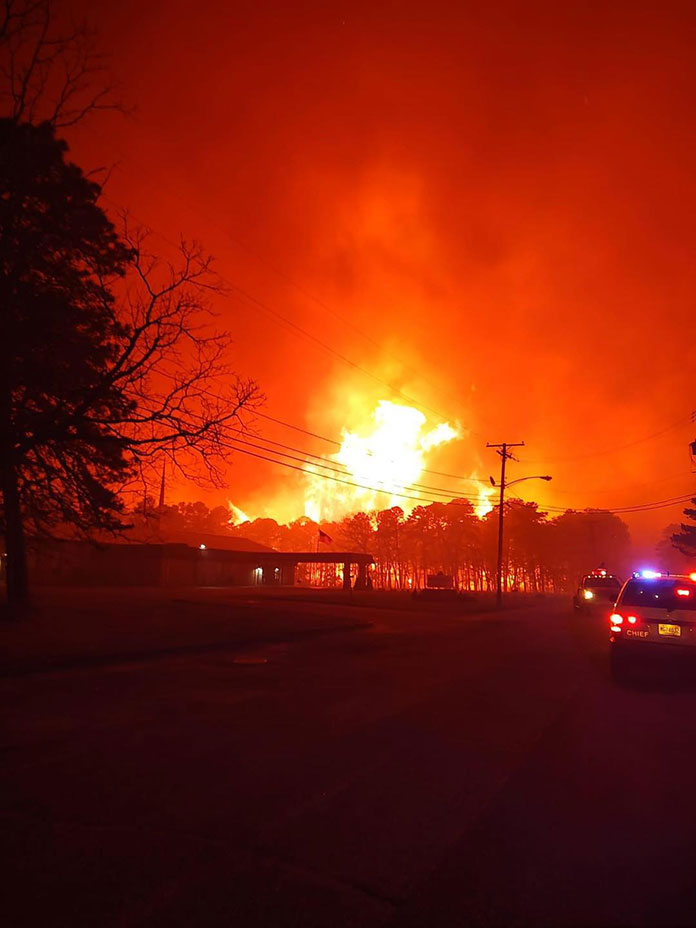
Resident Judy Auhmichel came out to the April 12 morning press conference concerning the Jimmy’s Water Hole Wildfire held at the Whiting Firehouse. While not a member of the press, she did ask Chief Fire Warden State Forest Fire Service Greg McLaughlin about the virtues of the Firewise Communities USA program.
He said his office works with communities to develop “wildfire protection plans which identifies where fire risks may be present and then we offer assistance to help mitigate the wildfire risk measures. There is grant funding available as well. We also work with residents on evacuation plans,” McLaughlin said.
“Through our Firewise Communities USA program we help those residents to be prepared and take actions themselves to create conditions such as defensible space around their homes, changing things like replacing wood mulch to stone and to reduce flammable vegetation to less flammable vegetation,” McLaughlin added.
In speaking with members of the news media, Auhmichel said, “we were Firewise for seven years but we gave it up but my community (Country Walk of Lake Ridge off of Route 530) took it over. We put a firebreak in during that time. We got a $20,000 grant and we maintain it off our own budget.”
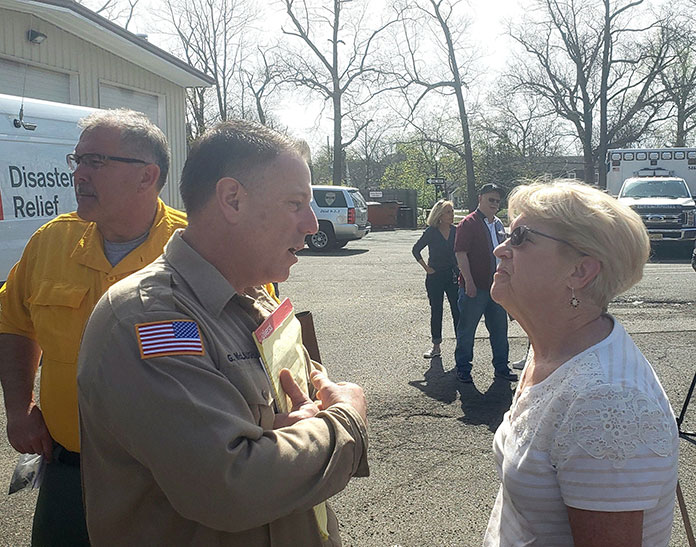
She added, “in 2014 we became the first Firewise community in Manchester Township. I am currently on the Manchester Wildfire Safety Committee. It is important because we are in the Pinelands and we are very vulnerable to wildfires. It is not a hard sale in our community (to get them involved and aware of the safety factor).”
“Our community has really backed up the Firewise program completely. We had to have an educational session once a year to maintain our Firewise status. My community is only 304 homes and we would have between 150 to 200 people attending that session,” Auhmichel added.
She recalled a fast-moving fire in 1995 while living in Roosevelt City. “When you came out of your house you saw flames right there shooting up and when I moved to Country Walk I was concerned that we only had one way in and we needed another way out of the community.”
The subject is periodically discussed at meetings of the Manchester Coordinating Council which features representatives from each of the township’s 27 age restricted communities.
McLaughlin said that prescribed burning season takes place from October 15 to March 15. The goal is to perform prescribed burning on approximately 20,000 acres of forest each year. “These controlled burns are small, about 75 percent reach a maximum of only 10 acres or less.”
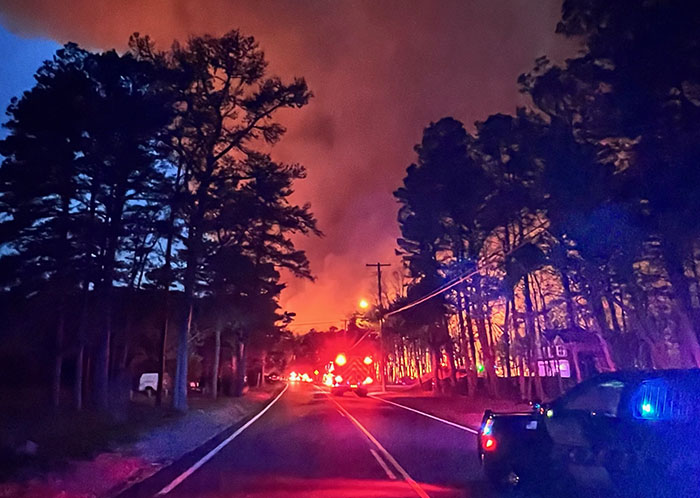
Prescribed burns target “ladder fuels” in order to eliminate the starting point for wildfires. Ladder fuels refer to the vegetation along the forest floor that allows a fire to travel upward from the ground, to low tree branches on canopy trees, to tree tops, he explained.
He presented the scenario of a fire starting in the shrubbery and spreading up tree trunks and branches – the name “ladder” fuels is a visualization of the process.
“We’re trying to break that connection,” said McLaughlin.
It is no coincidence that the State Forest Fire Service selects fall and spring to perform these prescribed burns. These are peak wildfire seasons.
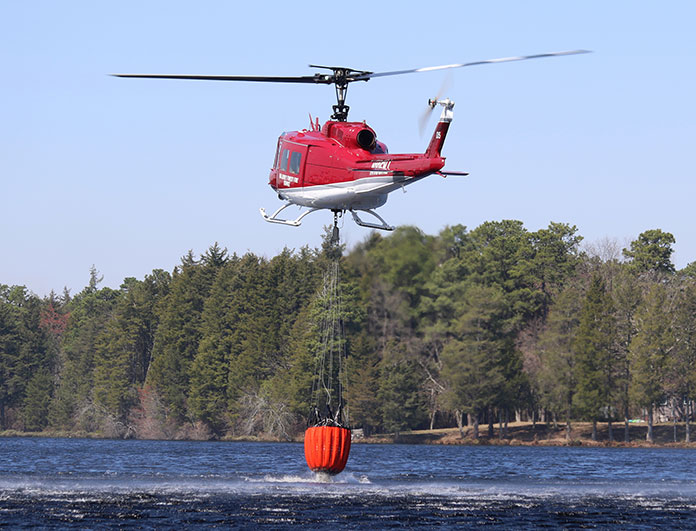
McLaughlin explained the springtime wildfire season is much busier than the autumn due to factors like humidity, heat, and wind. Springtime is much more likely to see the spark of wildfires than summer because summer has more humidity and more rainfall. The wetness doesn’t allow the leaves to dry out as quickly.


